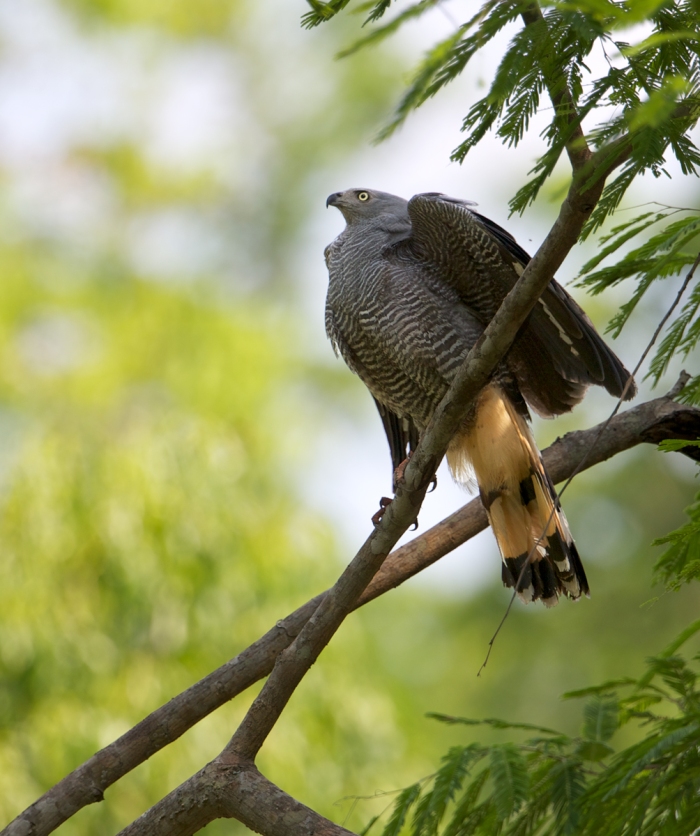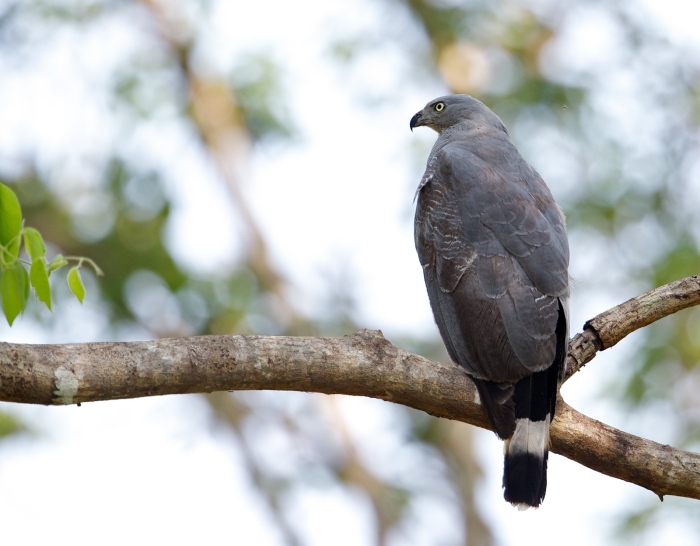Return of Bird of the Week: Crane Hawk

Crane Hawk, Pantanal, Brazil
The Crane Hawk is a medium-sized accipter with a very wide distribution, extending from Mexico to northern Argentina. While it is never found in large numbers across that extended range, there are believed to be about 50,000 birds. But that’s guess; surprisingly little is known about the species.
The most notable feature of this species are those very long legs. The legs are nearly unique among raptors in that they are “double-jointed,” able to bend in both directions. Stated technically, it has an intertarsal joint that allows flexible forward and backward bending of its legs
The leg length, long outside talons and peculiar joints are all adaptations to one of the species’ hunting techniques: reaching deeply into cracks, crevice and holes to capture prey.

Crane Hawk, Pantanal, Brazil
It’s a diurnal species and is found mostly in tropical lowlands like mangrove lagoons and open woodland. It also occurs in swamp forest, and areas with streams and ponds. It’s rarely encountered above 1,000 meters. It rarely hunts from flight. WC has been lucky enough to see them hunt in several ways: following prey on foot on large tree branches, fishing in holes in tree trunks with those longs legs and probing leaf litter of the forest floor. WC’s guide describe watching them scale trees and use their legs to reach in holes while balancing with their wings extended.
The very wide range suggests they are not under immediate threat, but that’s at best an educated guess. Very little is known.